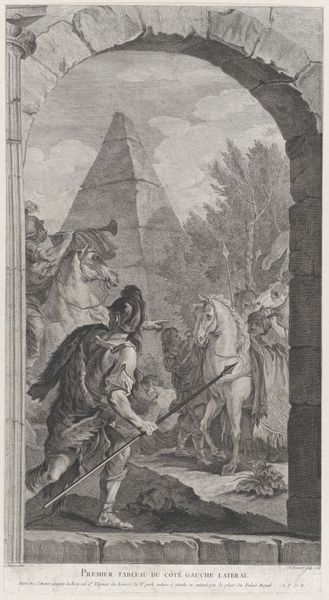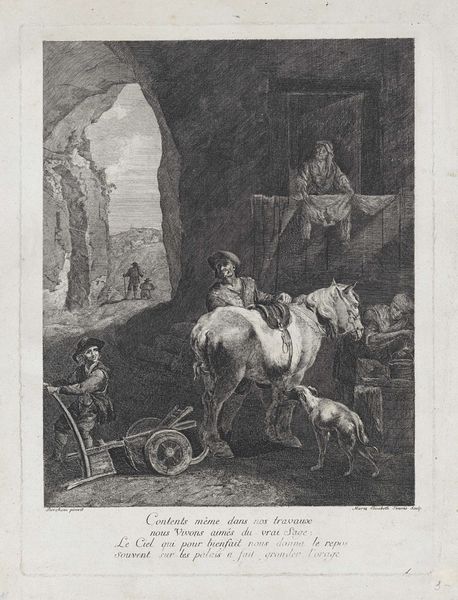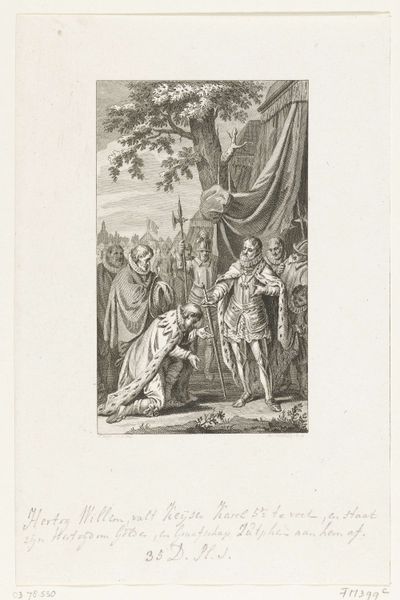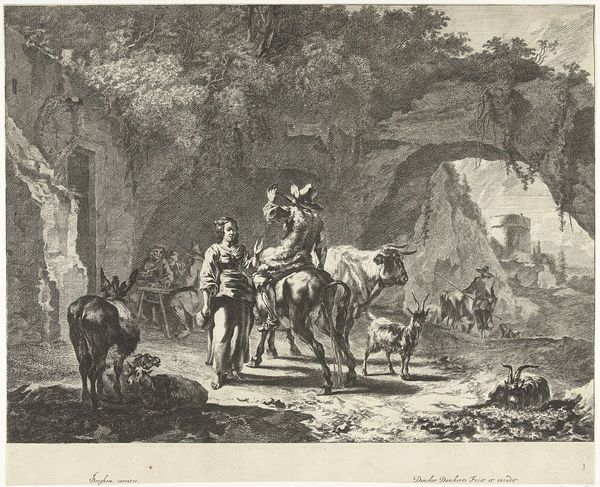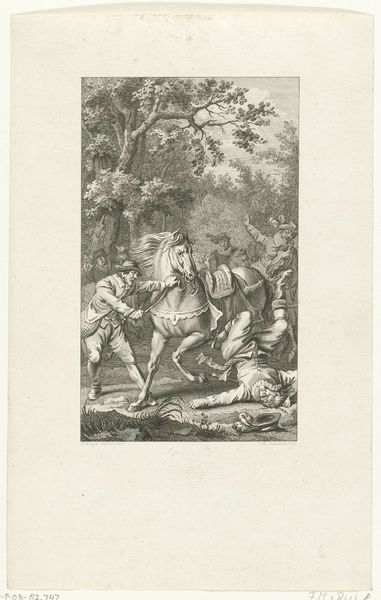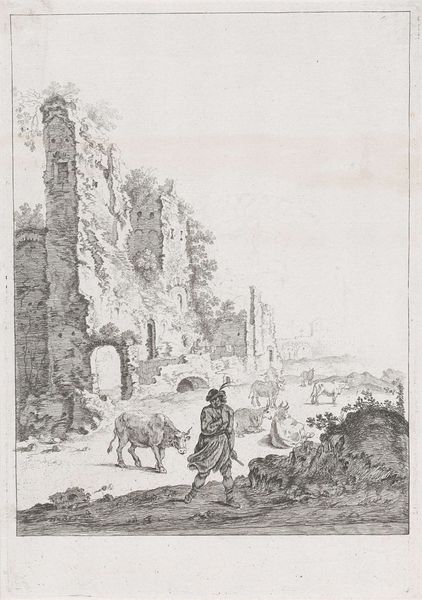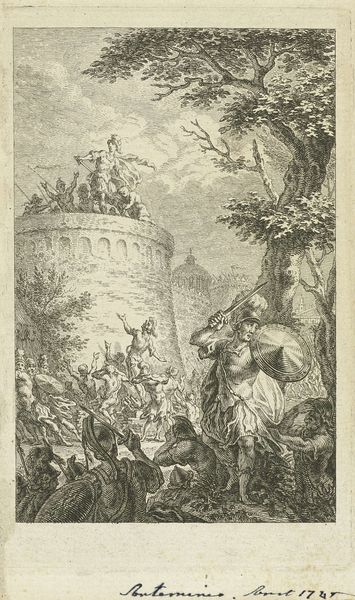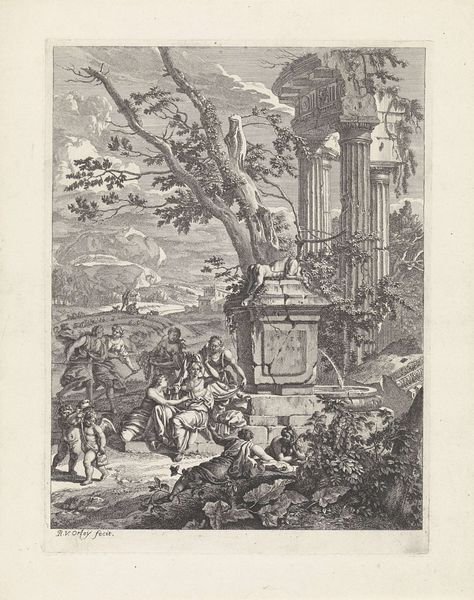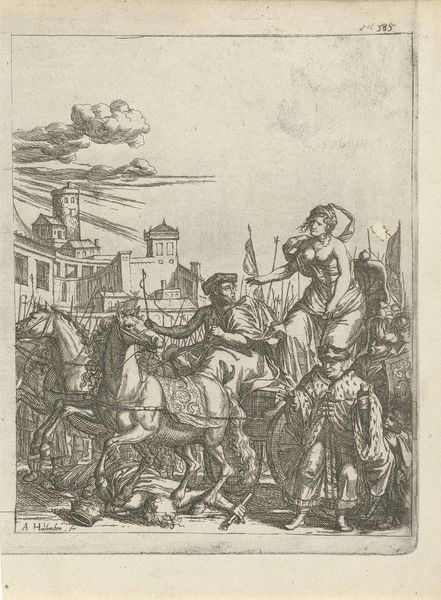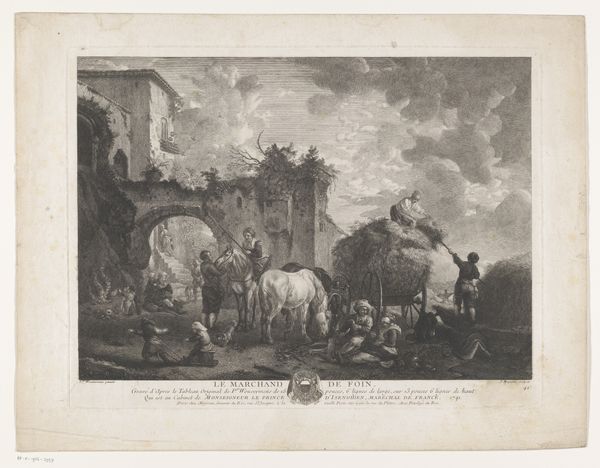
print, etching
# print
#
etching
#
dog
#
landscape
#
romanticism
#
horse
#
genre-painting
#
history-painting
Dimensions: height 277 mm, width 215 mm
Copyright: Rijks Museum: Open Domain
Curator: Johannes Schoenmakers created this etching, “Travelers at a Ruin,” sometime between 1770 and 1842. Look at the way the scene is arranged. What’s your initial take? Editor: Melancholy, definitely melancholic. It feels like witnessing a fleeting moment, caught between the grandeur of the past and the weariness of the present journey. The crumbling architecture looms, a silent witness to these ordinary travelers. Curator: Interesting. Schoenmakers employed etching, a printmaking technique, to convey a sense of detail. The process itself, the biting of the metal plate, reflects the themes of time and decay present in the image. This print could have circulated widely, consumed as affordable art during its era. Editor: Right, the technique complements the subject. There's something about the print medium – the way it can be replicated, dispersed – that makes me think about shared human experiences of transience and survival. We are all just wandering. Curator: Precisely. Consider the social implications – who had access to these images? Were they aimed at an emerging middle class seeking to engage with ideas of landscape and history? How might their meaning have changed over time depending on context and owner? Editor: Absolutely. The ruin in the backdrop isn’t just a scenic element; it suggests historical reflection but it is also a raw material, maybe they are looking to scavenge stones or simply stopping for lunch there. The intimate groupings and weary stance is compelling and accessible. The little dog makes you feel for them. Curator: So you see it reflecting broader societal shifts? How tastes and aspirations shaped art's production and its consumption? This wasn't merely art for art’s sake. Editor: More like life reflected, transformed. Maybe that’s the trick. We keep building our worlds alongside the relics of the former ones, repurposing what remains. Like a traveler etching his or her way towards someplace new. Curator: Food for thought, indeed, thinking about what this means today, and who has the ability to do it. Editor: I completely agree; that is exactly the journey that strikes you upon the viewing. The journey continues.
Comments
No comments
Be the first to comment and join the conversation on the ultimate creative platform.
